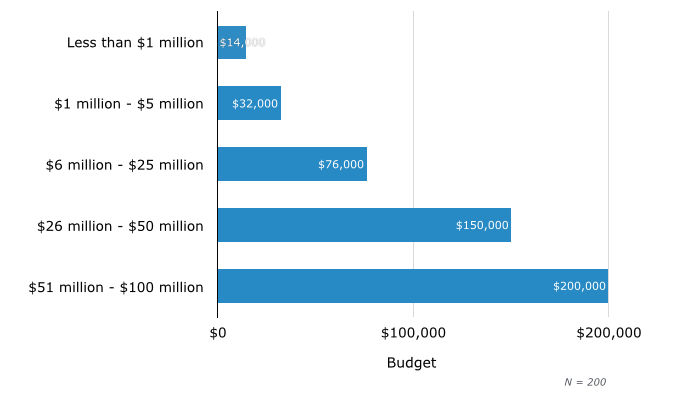Staying updated with the latest technology is difficult due to the rapid pace of change and a large number of developments being introduced year after year.
But if CIO's and IT managers do not keep up, they risk missing opportunities to decrease costs, improve staff productivity and stay competitive.
To avoid getting run over by technology advances, your IT staff must consider the cost of software upgrades including the cost of falling behind.
In this article, I will cover some of the seen and unseen costs of staying update to date with technology, so when the time comes, you can make the right decision.
I have categorized software as employee-facing software and consumer-facing software to help you understand how upgrades affect them individually.
For the sake of clarity, I have also included real-world examples: ERP for employee-facing software and Wi-Fi/kiosk apps for customer-facing software. Let’s see the implications of how these affect business operations.
Employee-Facing Software

The average cost of software upgrade can range from a few thousand to hundreds of thousands of dollars, depending on the size and the type of business you are in. But these are not the only costs. There are many hidden or consequential charges that companies often don’t consider.
One of the biggest factors when upgrading employee-facing software is the loss of man hours or productivity. Let’s say, for instance, you want to go-live on your upgrade from your ERP software over a long weekend. You reckon spending three to four weeks without encountering any bugs and more if you happen to encounter them. This means your output over the period would be slowed down, or worse, halted completely.
According to the latest IHS findings, IT downtime costs North America $700 billion a year from $1 million a year for a mid-sized company to more than $60 million for a large enterprise. Other than downtime, some of the peripheral expenses include costs of network architecture upgrade, training, consultation, debugging, data migration and customizations.
When upgrading, define lost productivity, operational considerations, employee training time and other commitments so you get a good idea about the total cost of an upgrade. This whitepaper from Panaya (recently acquired by tech solutions giant Infosys) gives you a good handle on achieving excellence during ERP upgrades to ensure that IT isn’t holding business behind.
Consumer-Facing Software
While there is a risk of losing productivity when upgrading employee-facing software, there is a risk of missed opportunities, losing customers and loss of reputation when upgrading consumer-facing software.
Some examples of consuming-facing software are vendor management software, E-commerce websites, loyalty kiosks or free Wi-Fi hotspots. A lot of these software vendors offer free upgrades or a lifetime maintenance for an upfront fee. However, that doesn’t mean that each update will come free. You might have to buy advanced network equipment and other peripherals to use the upgraded software.
Let’s consider an example of free Wi-Fi, the seemingly “must-have” consumer-facing software that every public place is pressured into getting. Richard Solomons, CEO of the InterContinental Hotels Group, said: “We've done a survey that showed 43 percent of guests say that they won't stay in a hotel if it doesn't offer free Wi-Fi, so we know it's an issue and we know it for ourselves.”
If luxury brands are pressured into offering customers the technology they have been craving, what chance do small businesses have without it?
That’s why, it’s important to choose consumer-facing software that comes with minimum fuss and upgrades, so you are up and running in no time. Multi-purpose hotspot software such as the one from Antamedia is ideal for a business with a physical outlet because it can work with any device operating system, laptops and mobile devices without any client software installation, ensuring minimum or no investment needed during upgrades. Further, coupled with analytics, such customer-facing Wi-Fi software can
- allow customers to log in with Facebook
- collect customer data and feedback through surveys
- sign them up and push emails and notifications
- allow customers to print
- promote offers with personalized coupons
Thus, it is important to choose consumer-facing software most wisely. The question to ask yourself is how long will a customer let go or wait before she decides to move on? We know 40 percent people abandon a website that takes more than three seconds to load but when it comes to customized consumer-facing software, the pressure is multiplied immensely.
Over to You
When software nears its end of life, one option is to spend some time and money to upgrade it and the other is to ignore it as long as you can. On the whole, the additional cost is often repaid with continued support, productivity improvements, and time savings, but there is also the risk of Murphy’s Law coming true anything that can go wrong, will go wrong.
Nevertheless, you will have only to blame yourself for missed opportunities if you choose to ignore upgrades. It’s a double-edged sword at best. So what is the way out?
Be careful and practical. Assess the benefits and limitations of upgrades before you set out on this perilous journey.
- Perform a rough analysis of costs, upfront as well as hidden.
- Identify and detect risks through change analytics.
- Calculate ROI of ERP and other software upgrades to see how soon you can start seeing rewards.
- Weigh the rewards and risks.
- Most importantly, remember Murphy’s Law and make sure you are well prepared for the worst outcomes.
